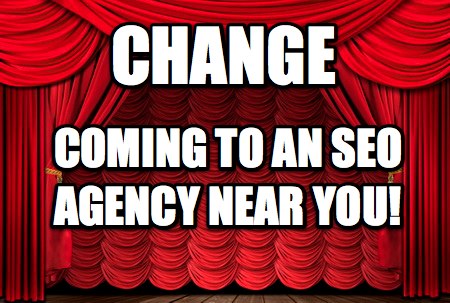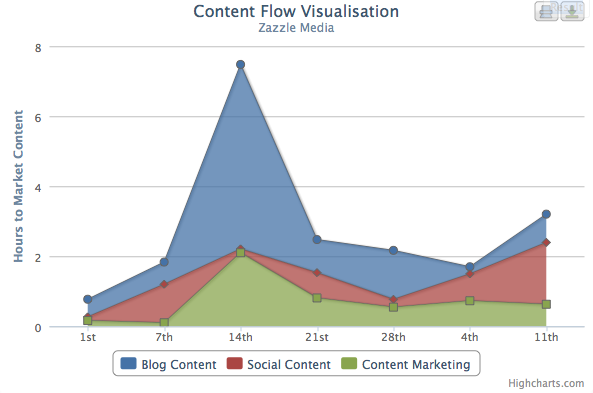
“The snake which cannot cast its skin has to die.”Fredrich Neitzsche
While I certainly don’t agree with everything Nietzsche shared, his famous quote above captures nicely where digital marketing is right now.
As an industry, change is something we live with day in day out, but we’re in a period of unprecedented shift. Google is moving to a model of rewarding relevance and value based on the semantic web while rendering manipulative techniques of old redundant.
As Wil Reynolds explained so eloquently as the central theme to his recent Mozcon presentation, it’s time to do #RCS or Real Company Stuff (the polite version). And content investment leads that charge, which means you’ll need to know how to make the most of creating it.
What follows are a few killer tips to help with that transition and help everyone “cast off” that skin, starting with this quick-fire list of actions you should be considering taking as you grow your content investment.
Idea Creation
- Create a list of regular ideas you can repeat as part of a series. Things like Quick Tips, Q&As, Know Your… Top 5/10s, etc.
- As well as a list of ideas creates a list of the types of content that would work for your brand online – blog posts, videos, interactive infographics, etc.
- Look at cutting edge content such as data visualization as a “big bang” idea.
- Content can be “live” – so webinars and question-and-answer sessions can work brilliantly in real time.
- Create your magazine front page and work out what headline stories would be on your front page every issue, then create lots of ideas around those themes.
- Spend time on data visualization sites like flowingdata.com to get idea on how you could reinvent the way content is done in your market.
- Use Highcharts.com to visualize every part of your content strategy; from flow to author or writer workloads to ensure everything is consistent and deliverable.
- Tools can help you create more ideas. Use social data to help find out what people are talking about using something like social mention or Bottlenose, a new social search engine that I love.
- Use Google’s autosuggest to suggest content ideas based on phrases people are searching for. Combine with Ubersuggest to expand those ideas and create a great content list.
- A lot of energy is used to talk about the new kinds of content you can create on the web, but the good old blog post is still at the core of any great strategy.
- Competitions are a great way to grow audience via social that you can then engage with in part two of your strategy.
- Don’t be afraid to talk about more than what you’re doing. Become a knowledge hub and add value to the digital space. Prove your expertise and give away knowledge and the rewards will be great.
- When brainstorming ideas begin by not worrying about whether it’s realistic and “doable.” You can refine later. Begin by putting everything on paper.
- If you can’t explain your post idea in a sentence to a 12-year-old, then it’s probably a bad idea – or at least an idea that needs refinement.
- Schedule in time for idea brainstorms away from the usual work environment. I have done them everywhere from the side of a lake to a bar. Change of environment stimulates creativity.
- Use a tool like Trello or Bubbl.us to help you map ideas “live” as you brainstorm as this will help everyone create ideas of the back of ideas.
- Ubersuggest and Wordtracker’s keyword questions tool are great for expanding on ideas as they suggest related terms being searched for.
Creating Structure
- Don’t plan to simply repeat content type. Look to create “flow” by varying the type of content you create and publish. Think:
- Blog post
- Infographic
- Video
- Blog post
- Ebook
- Etc.
- Visualize your content strategy as a piece of music. It must ebb and flow with big and small ideas to create interest.
- Visualize your content flow. It’s important to ensure you have the right level of activity across all channels. Do this in highcharts.com and using their Stacked Area Chart. Map hours spent on each piece of content you create across every channel you operate across. You’ll end up with something like this:

- Buy a big selling B2C magazine you respect and reverse engineer its content plan. Work through it page by page and schematically map each feature against a flatplan piece by piece of content so you can understand how it flows. Replace their ideas with yours and you have a content plan!
- Your 6-month content plan should take the form of an editorial calendar that also captures key industry events and the state of mind of your customers.
- Live your life by a 6-month content plan. Make it the number one priority for your business for the first 6 months to drill into everyone how key the upkeep and delivery of it is.
- Perform a SWOT Analysis before starting to create your content strategy to analyze the strengths and weaknesses of your competitors’ content. Look to exploit those weaknesses.
- Include your site pages in your initial structural plan. It’s vitally important that every page is part of your plan. Not just the new ones and your blog. Ensure that every word matches your brand persona and oozes brand message.
Content Strategy
- Less is more when it comes to bigger ideas. Try to create big ideas you can brand and repeat and iterate annually to build value long term.
- Don’t just think “on page” and Google as your route to market. Plan across platforms – social, website and off page.
- Think about timings. We know how days of the week or hours of the day affect email open rate and social sharing and it’s the same with content publishing. Get it right to maximize reach.
- When planning content, think about the three phases you want to work through as part of the wider strategic vision:
- Growth (audience).
- Engagement (create evangelists and improve reach).
- Monetization (how you create revenue).
- Think beyond simply publishing and marketing your content. Gamification models can really improve stickiness and the ROI of any content investment.
- Know your audience. Use surveys for quantitative data and customer meets for qualitative info so you know what tone to use when creating your content and what to write about to answer their questions and problems.
- Develop personas for your brand. Segment your customer base into three or four personas and plan to create content for each one, as they will have differing needs.
- The key to a successful content strategy is to amalgamate several separate plans into one cohesive uber-strategy. You should have a content plan for: every platform your business has a presence on, every persona you market to and also your off page content marketing plan for reach.
- Think carefully about your content strategy for every channel, so they complement each other and don’t simply either repeat the same content or fight for eyeballs. Play to each platform’s strengths.
- Create a content flow plan as part of your strategy creation process.
- Get buy-in from all stakeholders. Where possible involve a brainstorm with agency and client in one room. You have a much better chance of success with it.
Content Execution
- When creating copy think about every small detail. Font style and size matters, kerning matters, leading matters. Presentation and execution is as important as the idea. Make it beautiful to consume.
- Spend at least 30 minutes working on the headline. It’s the most important aspect in terms of getting any content marketing effort traction. On average people spend 3 seconds deciding whether to read on and your headline is your “front cover teaser”.
- You cannot easily reinvent the wheel so look for news stories that give your idea a “new nose.” Kate Middleton’s naked pix may be a great reason to write a “privacy and media law” advice piece, for instance.
- When planning a post start with the structure. Plan headline and each section, then start with the first paragraph of each section to sum up what they are there to do and what value they bring. That kind of structure helps people progress through to the conclusion.
- Always remember to answer what where how and why with every piece of content you create if its intention is to educate. Every type of content should answer at least two of those irrespective of what the aim of it may be.
- Rel=Author is key as part of the growth of AuthorRank. Create persona writers for your brand and build their authority over time.
Measure Effectiveness
- Set up goal and funnel tracking as part of any major content creation process and track users through to action. Just ensure that time frames are set in a realistic manner. Too many times this is measured over weeks or a couple of months when it should be a 6-12 month investment that will continue to deliver engaged and targeted visitors for many month to come.
- Don’t simply measure outreach by the links earned. Look at referral traffic and brand visibility value also as part of the measurement process. Guest posting is about much more than links.
- Many of the key social metrics should be included in any content marketing measurement campaign. Sentiment and engagement are key things to keep track of.
- Set up Google Alerts with a snippet from any major piece of content you create so you are alerted as soon as anyone copies it. Great content will be copied and the reaction should be simply to ask for a credit link. Build the relationship while the power is in your hands!
- Don’t expect every major piece of content to “fly.” A one in three hit should be considered great but the value from that one will be enormous.

